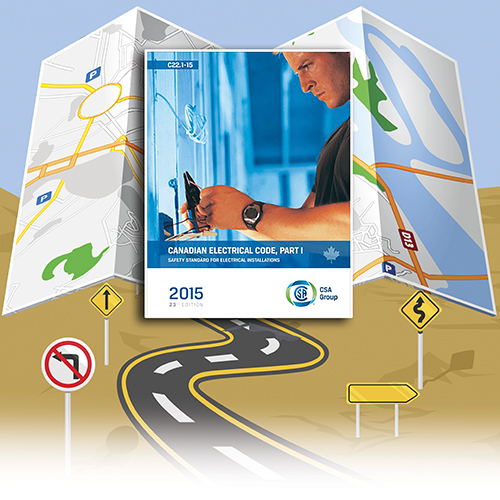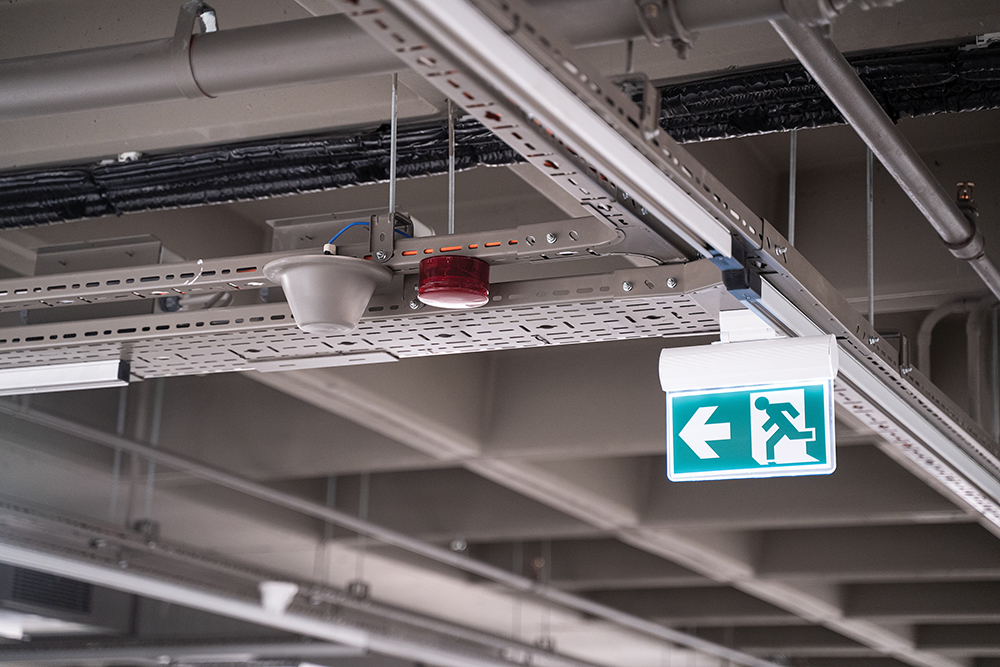The Code is a comprehensive document. Sometimes it can seem quite daunting to quickly find the information you need. This series of articles provides a guide to help users find their way through this critical document. This articles is not intended to replace the notes in Appendix B or the explanations of individual requirements contained in the CEC Handbook , but will hopefully provide some help in navigating the Code, while reading the Code.
Section 8 – Circuit loading and demand factors
Section 8 is a general section of the Code. It provides the information you need to select the conductor ampacities and equipment ratings for consumer’s services, feeders, and branch circuits, in coordination with Section 4 – Conductors, Section 6 – Services and service equipment and Section 14 – Protection and Control. As well, it determines branch circuit positions for dwelling units.
Rule 8-002 outlines the special terminology used in this section. It includes Basic Load – only lighting and receptacle circuits based on the dimensions of specific building occupancy as listed in Table 14; Calculated Load – the load calculated in accordance with the rules in this section; and, Demonstrated Load – the historical demand watt information recorded over 24 months for the same type of facility.
In the general section, Rules 8-100 to 8-104 outline methods of calculating voltage drop, maximum circuit loading, use of demand factors, the number of branch circuit positions and determination of areas. It specifies standard voltage divisers to be used when calculating currents from watts or volt-amperes in low voltage systems; maximum allowable voltage drop in installations; maximum circuit loading based on the overcurrent device used; and the calculated load. You will also find here the factors for determining a continuous, cyclic, or intermittent load, and how this affects the selection of conductors and equipment.
This section also outlines, in Rule 8-106, the use of demand factors where the size required for conductors and switches is not available in a standard size; where two or more loads are installed, but only one can be used at a time; where air conditioning and electric space heating are installed and only the greater load is used for calculating demand; and, where loads of a cyclic nature are installed such that the maximum load cannot be supplied at one time. Where additional loads are added to an existing service or feeder,
Rule 8-106(9) permits the load to be calculated by adding the sum of the additional loads to the maximum existing demand load measured over 12 months. Other demand factors can be based on demonstrated load calculations by a qualified person, as determined by the Authority Having Jurisdiction.
Another function of this section, in Rule 8-108, is to outline the number of branch circuit positions needed for dwelling units based on the ampacity of the service and whether a central electric furnace is intended.
The Services and feeders section outlines the methods of calculating the minimum ampacity of service or feeder conductors for various types of occupancies. Although the various options and conditions may seem complicated, methodically working through the demand factors for each type of occupancy will allow you to determine the correct ampacity for service or feeder conductors.
The methods for determining demand factors for dwelling units are divided into single dwellings and apartment and similar buildings. For single dwellings, you are given two options depending on the size of the dwelling. In the first option where the living area of the dwelling exceeds 90 m2, the basic load is 5000w, and additional loads are added with various demand factors as listed in 8-200 (1)(a)(ii to vii). The second option is to use a basic load of 100 A if the floor area is 80 m2 or more, or 60 A if the floor area is less than 80 m2. Note that rule 8-110 designates how to determine the living area.
For two or more dwelling units of row houses, the minimum ampacity of service or feeder conductors from a main service is based on the above demand factors for each single dwelling, excluding electric space heating and air-conditioning loads, plus the demand factors outlined in Rule 8-202(3).
For apartments and similar buildings, the minimum ampacity of service or feeder conductors from a main service is calculated according to Rule 8-202. As with single dwellings and row houses above, the basic load is based on living area plus the demand factors for various other loads as outlined in Rule 8-202 (to 4).
There are specific rules for determining the ampacity of service or feeder conductors for schools (Rule 8-204), hospitals (Rule 8-206), and hotels, motels, dormitories, and buildings of similar occupancy (Rule 8-208). For other occupancies, as listed in Table 14, the calculations are in Rule 8-210.
One other consideration is exit, emergency and show window lighting where the loads may be spread throughout the building. Exit and emergency lighting demand shall be determined by connected load. In the case of show window lighting, demand is based on 650 W/m measured along the base of the windows.
This section also outlines required Branch circuit positions and demand factors. Rule 8-300 provides demand loads for branch circuits supplying electric ranges and cooking units. Rule 8-302 specifies that branch circuits supplying data processing equipment be considered continuous loads. Rule 8-304 specifies that the maximum number of outlets per any 2-wire circuit is 12 unless the actual connected load is known and the load current does not exceed 80% of the overcurrent device rating.
Rule 8-400 provides guidance for the number and loading of branch circuits for automobile heater receptacles generally, and where the loading on each receptacle is controlled or restricted.
In the next installment, we will look at Section 10 – Grounding and Bonding.
* The source for this series of articles is the Canadian Electrical Code, Part I, published by CSA
The Canadian Electrical Code, Part I is published by the Canadian Standards Association
The CEC Handbook is published by the Canadian Standards Association.











Find Us on Socials